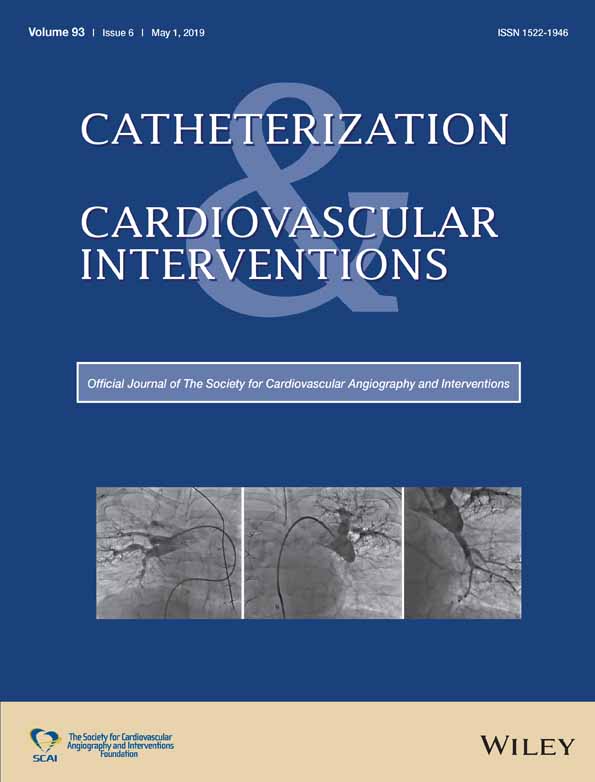Stent-retriever thrombectomy in the treatment of infants with acute thrombosis of the superior vena cava and innominate vein
Funding information Stiftung zur Förderung der Erforschung von Zivilisationserkrankungen, Baden-Baden, Germany
Abstract
Objectives
To describe the efficacy and safety of stent-retriever thrombectomy in infants with thrombosis of the superior vena cava (SVC) and innominate vein.
Background
Thrombosis of the SVC and of the innominate vein is a potentially life threatening complication in infants during intensive care treatment following major surgical procedures. To avoid reoperations, we evaluated interventional revascularization by stent-retriever thrombectomy.
Methods
From 2015 to 2017, five infants were diagnosed with acute thrombosis of the SVC and innominate vein following major cardiac or pediatric surgery. Using a femoral venous access and 4 or 5 French guiding catheters stent-retriever systems (4/20 mm or 6/30 mm) were placed into the thrombus and retrieved under suction. We aimed to revascularize not only the SVC but also the innominate, jugular, and subclavian veins.
Results
Following repeated stent retrieving manoeuvers, we were able to reestablish flow in the major veins of all patients. Due to significant residual thrombotic material, we decided to perform additional balloon dilatation of the SVC and innominate vein in 3/5 patients. There were no complications related to the procedure and none of our patients required blood transfusion. Following the intervention, the patients received treatment with low-molecular-weight heparin. Interventional treatment achieved persistent patency of the SVC and innominate vein in all patients.
Conclusion
Stent-retriever thrombectomy is a safe and effective method for interventional treatment of acute thrombosis of the central veins in infants. Due to the large amount of thrombotic material, it is frequently required to combine this method with balloon compression of residual thrombotic material.




